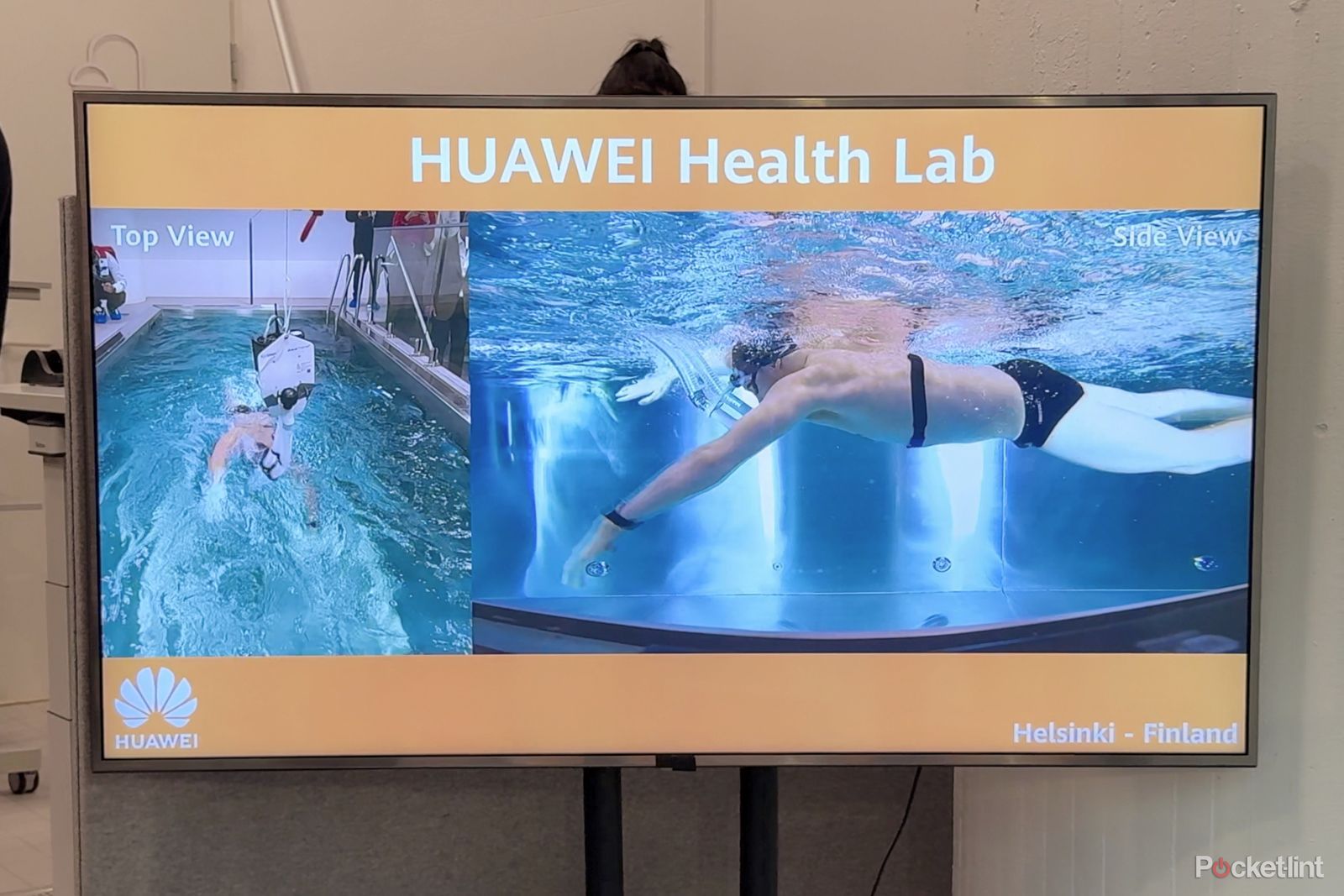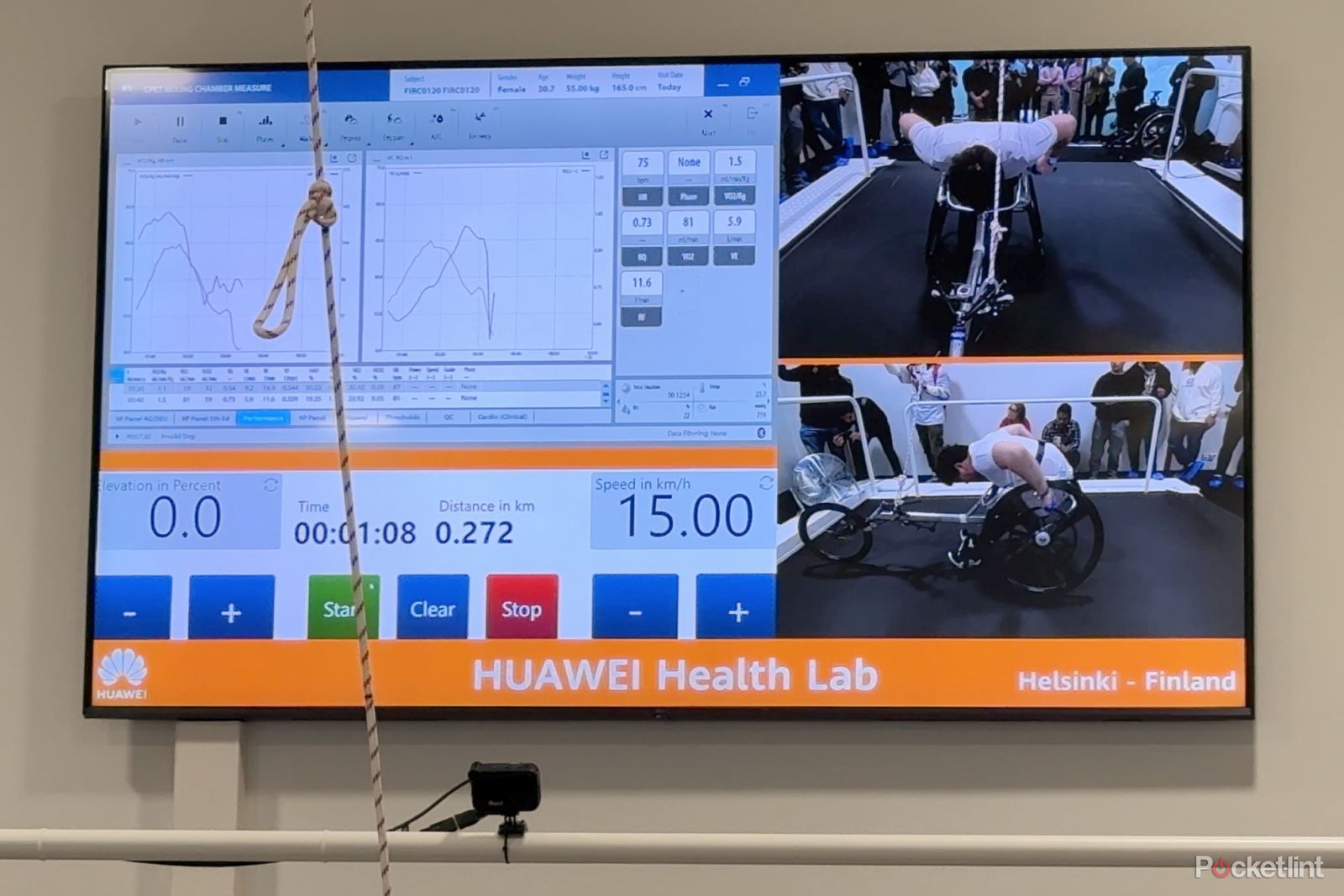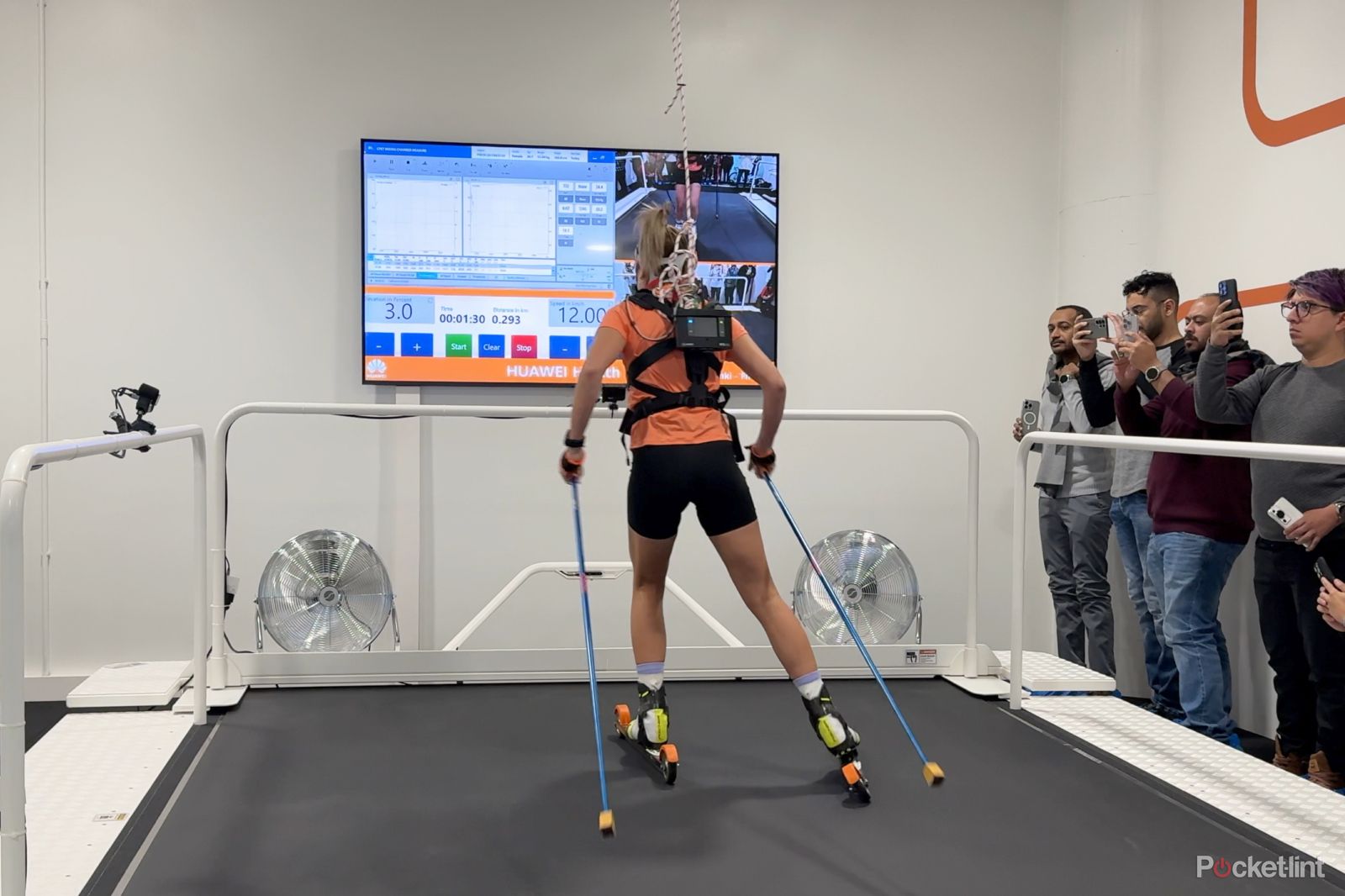Key Takeaways
- Huawei’s Health Lab in Finland is equipped with advanced sports testing equipment, including a unique ski simulator and a counter-current pool for swimming. This data-gathering hub aims to improve the activity-tracking abilities of Huawei’s smartwatches, particularly for skiing and swimming.
- The Ski Simulator allows skiers to practice carving and skiing while staying in one spot. Huawei’s cameras and sensors measure performance metrics such as speed, position, and carving angles. The goal is to incorporate more advanced ski-tracking abilities into future Huawei watches.
- The counter-current pool in the Health Lab is used to gather data on swimming performance by monitoring heart rate, respiration, and limb/body movement. This data will be used to improve Huawei smartwatches’ swim tracking features, providing more accurate readings and personalised training load calculations. The aim is to create a holistic approach to training and recovery across different sports, benefiting triathletes and individuals involved in multiple sports.
Huddled into the back of an industrial park to the west of Helsinki, Finland, sits Huawei’s latest Health Lab, overlooking the Lauttasaari strait. From the outside, it’s quite an unassuming structure, looking like your standard, square, brick building that might have once been modern but no longer is. But peel back the exterior and you’ll find a laboratory packed with the latest equipment for testing and measuring sports, a data-gathering hub, using sport science to boost the company’s wearables, with the aim of making the next smartwatch even better for activity tracking.
This Huawei Health Lab is a little different to the two it has built in China already – in Xi’an and Songshan Lakes – and offers an intriguing insight into the potential future for Huawei’s smartwatches, and their activity-tracking abilities. Huawei invited me to go behind the scenes to take a look at its world-class testing facilities to see what sort of data is being collected and where that might take us in the future.
Advanced ski tracking, indoors
Without a doubt, the one piece of equipment I was most impressed by was the Ski Simulator. Think of this as a treadmill of sorts, except, its surface isn’t rubber, but is instead coated with a unique carpet-like white material that’s designed to emulate the texture and friction of snow. The surface is sprayed with water as it moves, and the whole unit can be angled up and down to simulate downhill skiing conditions.
Skiers can hop on, practice some carving and skiing ‘downhill,’ while actually staying in the same spot. All the while, Huawei’s collection of cameras and sensors can measure all manner of performance and reaction metrics.
Sensors detect the skier’s speed, position, carving angles and other performance data. Cross-referencing this, and using the data from the Huawei Watch on the user’s wrist, the aim is that in the future, Huawei will be able to build more advanced ski-tracking abilities into its watches.
Gathering holistic swimming data
It’s a similar thought with the rest of the equipment inside the centre too. One of which is a counter-current ‘endless’ pool. Think of this as a treadmill, of sorts, but for swimmers. The pool produces a current for the swimmer to swim against, so – in theory – they can swim for all eternity (or until they get tired).
There are outlets built in that can be used to generate the flow – and adjust the velocity of that flow – ranging between 1.8m/s to 4.1m/s, and keeping it consistent. This method means swimmers never need to flip-turn as they might at the end of a standard Olympic pool.
While in there, they’re hooked up to various sensors. These include heart rate sensors and respiration sensors, helping Huawei to measure and analyse effort and oxygen usage. And, while I was shown the equipment being used by Finnish national team athletes, most of the testing done in the pool – and all the other equipment – is done with people of all fitness levels, body shapes and ages from the local area. This is done in order to help build a bigger base, and more thorough, accurate, and appropriate data sets for the watches on consumer’s wrists.
As well as those sensors, and the watch on the wrist, there are cameras around the pool that can record the movements of the limbs and body. Again – being able to look at this movement – cross-check it with the movement sensor data from the watch – will mean better insight into what those watch motion sensors can tell you in the future in terms of swimming style, efficiency and how that movement correlates with effort, heart rate and oxygen use.
This swimming tracking and data analysis will be used to improve upcoming Huawei Watches – specifically around swim tracking – and will mean that you’ll get more accurate readings. More importantly, it’ll be able to calculate your personal training load, training stress and – because of that – recovery times. It’ll be personalised to you, and your own physical responses, and not based on an arbitrary (or generalised) heart-rate zone chart.
It’ll mean you can have this data alongside your cycling and running data, and use it to compare your efforts, fitness and recovery across all three sports, rather than have the swimming session sitting in its own context-less bubble. It’ll make the training and recovery across all sports a lot more holistic, taking all of it into account, if you’re not someone who just does one kind of sport. Triathletes could be really well catered to here, in theory.
Benefits for cyclists and wheelchair users
These two impressive pieces of equipment are joined by others. There’s a treadmill for running and walking, but it’s a lot more advanced than the treadmill at your gym. It has sensors beneath the belt that can measure weight at the beginning, but then also measure precisely how each foot strikes the ground, giving in-depth data on running or walking cadence and symmetry. It can tell if your left and right foot strike the floor differently, and what that means in terms of muscle stiffness and form.
Again, the aim is to bring even more advanced data to running tracking from the watches, similar to how Samsung’s Galaxy Watch can, giving you an accurate look at not just your effort, pace and VO2 Max, but also how your posture and running form play into that.
Then there’s the much larger multi-functional treadmill. I saw it used by a cross-country skier on specially designed skis with wheels, a wheelchair racer and a cyclist. Its speed can be adjusted (up to 50kph), but it can also have its incline adjusted to simulate hills.
By using such a versatile machine – again with cameras to measure and detect posture and form – Huawei can use this data to add much more accurate and useful tracking modes for wheelchair users, cyclists and cross-country skiers.
All of this is important – especially when it comes to future Huawei watches – because the Huawei Watch will no longer just be an excellent fitness tool for runners, but it’ll be a great swimming watch, a great cycling watch and even a great watch for anyone who might be into more Nordic sports like downhill and cross-country skiing. Being able to build all of this data expertise and research into an attractive, well-priced and accurate fitness watch will make it a truly competitive smartwatch for all manner of activities.
There is, of course, fierce competition from the likes of Garmin, but what is important here is that Huawei can take all of this research and turn it into customer features that make sense and are actually useful. Being able to strap on your Huawei Watch and know that there’s a collection research-based features supporting a wide range of sports can only add to its appeal.
Trending Products

Cooler Master MasterBox Q300L Micro-ATX Tower with Magnetic Design Dust Filter, Transparent Acrylic Side Panel, Adjustable I/O & Fully Ventilated Airflow, Black (MCB-Q300L-KANN-S00)

ASUS TUF Gaming GT301 ZAKU II Edition ATX mid-Tower Compact case with Tempered Glass Side Panel, Honeycomb Front Panel, 120mm Aura Addressable RGB Fan, Headphone Hanger,360mm Radiator, Gundam Edition

ASUS TUF Gaming GT501 Mid-Tower Computer Case for up to EATX Motherboards with USB 3.0 Front Panel Cases GT501/GRY/WITH Handle

be quiet! Pure Base 500DX ATX Mid Tower PC case | ARGB | 3 Pre-Installed Pure Wings 2 Fans | Tempered Glass Window | Black | BGW37

ASUS ROG Strix Helios GX601 White Edition RGB Mid-Tower Computer Case for ATX/EATX Motherboards with tempered glass, aluminum frame, GPU braces, 420mm radiator support and Aura Sync












